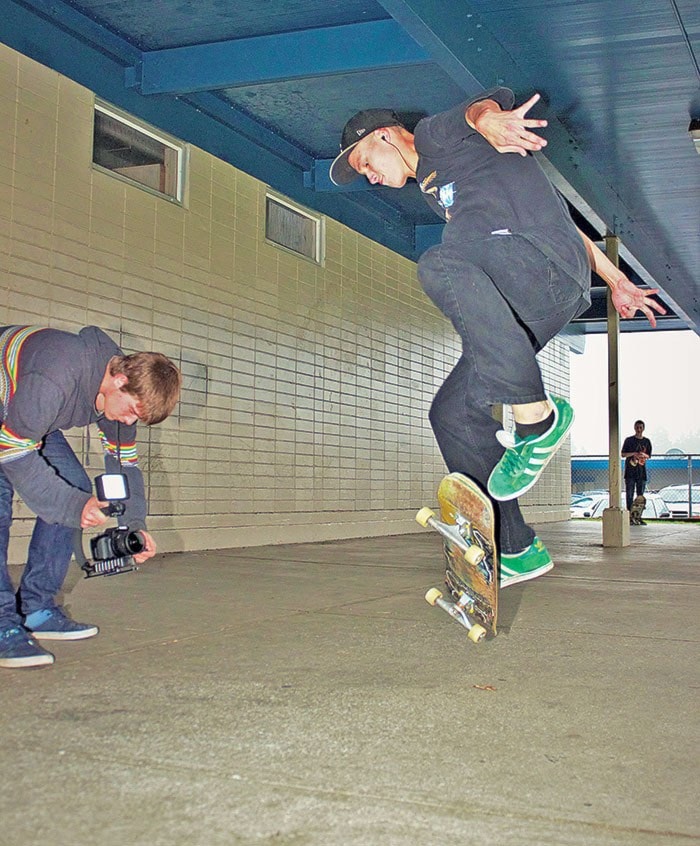If you happen to drive past Carihi on a school day you should see a group of kids with skateboards and backpacks trying to perfect their latest tricks.
When asked how often they skate in front of the school, everyone replied with “every chance we get. Before and after school, every break and lunch.”
Most carry their boards and books with them at all times, saving that extra trip to their lockers so they can get as much time as possible to skateboard.
Rain or shine, the flat concrete surface makes for a great place to hang out and practice. Often skateboarding gets a bad reputation.
“People see us wearing hoodies, carrying a skateboard plus a backpack and automatically expect the worst,” says Steven Green.
All the boys agreed, even mentioning some of the misconceptions that go along with it.
“We get called Punks and Skids. People assume we all do drugs,” added Kaydin Barton.
One kid chimed in saying he didn’t even go to Carihi but he came to the school a few days a week to skateboard because his didn’t allow it. Skateboarding was introduced in the mid 1950’s and since then has been shaped by those who dedicate themselves it.
“We all look up to each other, everyone has a different style,” says Henry Graham.
Regardless of how you choose to see the people participating – vandal, athlete, student, slacker, transportation or a fashion statement – skateboarding has been around for two thirds of a century and has become a multibillion dollar industry.
With no signs of slowing down, perhaps the one thing we can agree upon is that skateboarding is here to stay.
